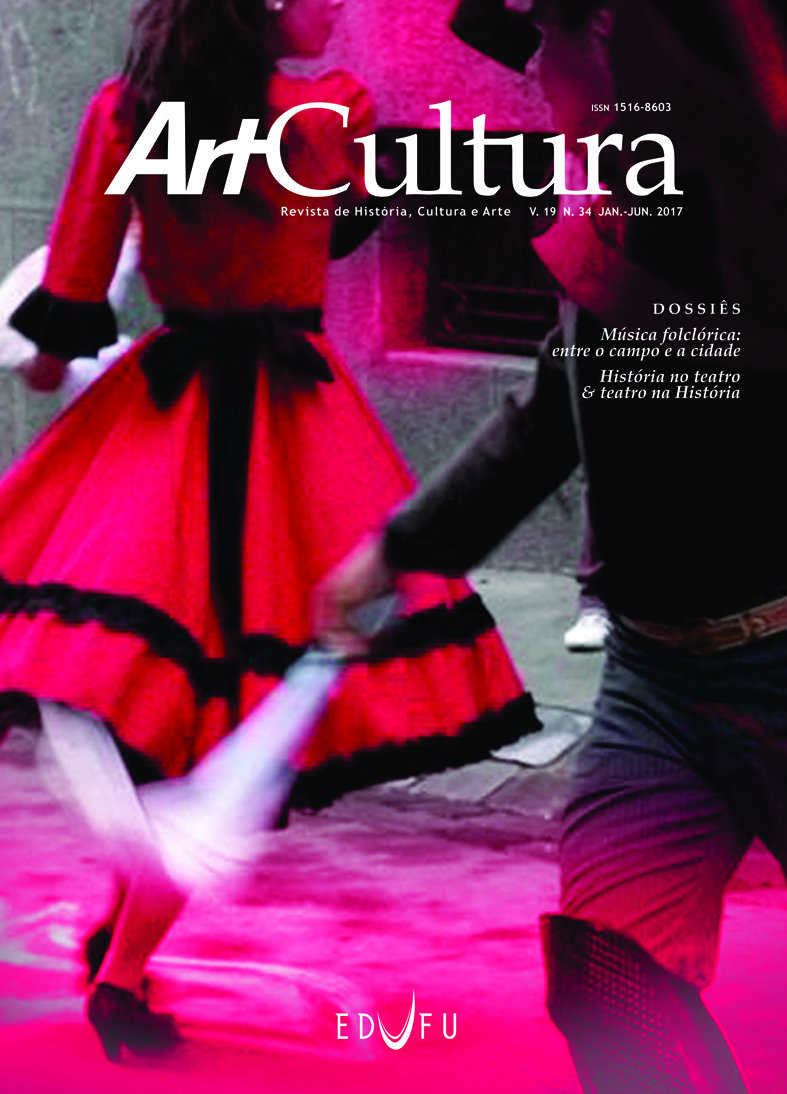Stanislavski’s self-writting: four notes about My life in art
DOI:
https://doi.org/10.14393/ArtC-V19n34-2017-1-08Abstract
The book My life in art, by the Russian theater director Constantin Stanislavski, is analyzed here from the point of view of the possible relation between “self-writing” operationalized by its author and the “work of the actor on himself” developed by Stanislavski himself in his theatrical practice. The article discusses the formal devices that enable the construction of an autobiographical character in this narrative (the idealistic notion of art, specific historical conditions and, finally, the description of the character), realizing how, throughout the unfolding of the plot, there is a fusion between the narrator’s and the character’s voices. Such a fusion seems to indicate one of the primary operations actors should perform to achieve the kind of spontaneity the character pursues throughout the book in his various scenic experiences. Thus, using tools of literary criticism, theory of History and theatrical studies, it is possible to put forward the hypothesis that the work Stanislavski proposes to his actors necessarily requires a kind of writing that is widely inspired in modern novel.Keywords: Constantin Stanislavski; theatre; autobiography.
Downloads
Downloads
Published
How to Cite
Issue
Section
License
Autores que publicam nesta revista concordam com os seguintes termos da licença Creative Commons, adotada a partir da ArtCultura, v. 21, n. 39 (jul.-dez. 2019).
CC BY-NC-ND 4.0: o artigo pode ser copiado e redistribuído em qualquer suporte ou formato. Os créditos devem ser dados ao autor original e mudanças no texto devem ser indicadas. O artigo não pode ser usado para fins comerciais. Caso o artigo seja remixado, transformado ou algo novo for criado a partir dele, ele não pode ser distribuído.
Autores têm autorização para assumir contratos adicionais separadamente, para distribuição não exclusiva da versão do trabalho publicada nesta revista (ex.: publicar em repositório institucional ou como capítulo de livro), com reconhecimento de autoria e publicação inicial nesta revista.


